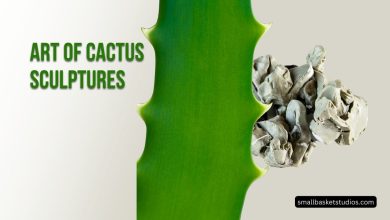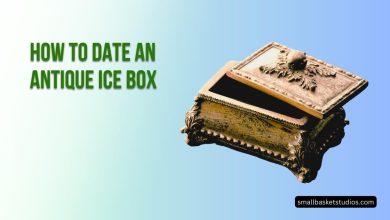Navajo Sculpture: A Journey Through Culture and Craftsmanship

Navajo sculpture is an engaging form of artistic expression which captures the vibrant heritage of Navajo Nation. These intricately-crafted masterpieces not only display creativity; they serve as evidence of its peoples deep connection to history, spirituality, and natural surroundings. We will delve into this subject matter of sculpture art from its roots through styles to symbolism to creators’ processes as we understand their value as priceless works of art.
The Rich Cultural Heritage of the Navajo People
The Navajo Nation
The Navajo Nation, situated in Southwestern United States, is the largest federally recognized Native American tribe. Comprised of parts of Arizona, New Mexico and Utah it encompasses an expansive and varied terrain encompassing centuries-old cultural roots and an appreciation for nature that manifests in artwork (especially sculpture) produced by this people.
Artistic Traditions
Navajo art has a long and storied history. Traditionally, the Navajo were known for their weaving, silverwork, and pottery. Sculpture, while not as ancient as these traditions, has become an integral part of Navajo artistic expression. Navajo sculptures are deeply rooted in their cultural and spiritual beliefs, often drawing inspiration from tribal legends, rituals, and daily life.
Exploring the World of Navajo Sculpture
Materials and Tools
Navajo sculptors employ various materials in order to bring their visions to life, the most prevalent being wood, stone and clay – each carrying unique attributes which allow artists to give their sculptures unique textures and aesthetics. Traditional tools like chisels, hammers and sanding equipment are used as shaping devices when shaping these sculptures further.
Styles and Themes
Navajo sculpture encompasses an expansive variety of styles and themes. Some depict figures from Navajo mythology like Holy People or legendary heroes while others highlight everyday scenes from tribal life that showcase traditions and practices unique to that tribe. With so much variety on offer in Navajo art sculpture there will surely be something that speaks to all art enthusiasts!
Symbolism in Navajo Sculpture
Navajo culture places great significance on symbolism, making its presence evident through sculptures made of intricately designed symbols with hidden meaning. Each sculpture displays intricate spiral motifs to represent life cycles while spiritual beings like Yei figures add even greater appreciation to these pieces of artwork! Recognizing these works only increases one’s appreciation of them even further!
The Artists Behind the Masterpieces
An Overview
Navajo sculpture as an art form has evolved significantly throughout its century-plus history, reaching new levels of recognition during the early 20th century as artists sought new means for artistic expression. Today’s sculptors continue this legacy while employing traditional techniques with contemporary styles in order to produce contemporary masterpieces.
Outstanding Navajo Sculptors
Numerous Navajo artists have garnered international renown for their outstanding sculpture contributions, with Allan Houser often being called the “Dean of American Indian Sculpture,” and R.C. Gorman being recognized for their emotive depictions of Navajo women. Both these Navajo artists have left indelible marks in Native American art history.
The Creative Process
Design and Inspiration
The creative process for Navajo sculpture begins with an initial idea or inspiration drawn from cultural heritage or personal experiences of its artist, often sketched or mentally visualized prior to starting sculpture work. Artists often collaborate with elders or tribal storytellers in order to ensure accuracy of representations they depict in their pieces.
Sculpting Techniques
Sculptors utilize their chosen material and tools to carve, shape, and mold their creations using various carving techniques that vary significantly based on material; wood can often be hand-carved while stone requires precise chiseling and sanding processes to bring its rough exterior up close and personal with intricate detailing that captures its subject matter.
Finishing and Polishing
Once the main sculpture work has been finished, additional touches such as smoothing surfaces, adding texture or applying any desired paint or patina are applied in order to accentuate its unique characteristics and increase aesthetic appeal. These final steps bring out its individual qualities as well as adding an overall sense of harmony within its aesthetic appeal.
Collecting and Valuing Navajo Sculptures
Authenticity and Provenance
When collecting Navajo sculptures, authenticity is paramount. Buyers should seek sculptures with clear documentation of their provenance, including the artist’s name and tribal affiliation. Additionally, reputable dealers and galleries specializing in Native American art are excellent sources for authentic pieces.
Pricing and Investment
Value of Navajo sculptures depends heavily upon factors like artist reputation, piece rarity and condition; as with any art investment it’s wise to conduct thorough research before consulting experts if needed; these culturally significant and artistic masterpieces offer both cultural significance and financial potential for collection or investment purposes.
FAQs
What is the significance of Navajo sculpture in Navajo culture?
Navajo sculpture is a means of preserving and sharing Navajo traditions, stories, and spirituality. It serves as a bridge between generations and a way to honor the tribe’s heritage.
Are there any contemporary Navajo sculptors making significant contributions to the art form?
Yes, several contemporary Navajo artists are pushing the boundaries of Navajo sculpture, infusing traditional techniques with modern interpretations. Their work continues to evolve the art form.
How can I distinguish authentic Navajo sculptures from reproductions or fakes?
Authentic Navajo sculptures often come with certificates of authenticity and detailed provenance. Reputable dealers and galleries specializing in Native American art are reliable sources for genuine pieces.
What are some common symbols found in Navajo sculptures and their meanings?
Common symbols include the spiral (representing life’s cyclical nature), the Yei figure (representing spiritual beings), and corn (symbolizing sustenance and prosperity). Each carries its unique cultural significance.
Conclusion
Navajo sculpture is an incomparably expressive art form that provides a window into their cultural legacy and traditions. Beginning as traditional forms, modern innovations by contemporary Navajo sculptors continue to inspire this art form which continues to draw visitors who explore it – collectors, enthusiasts and those simply curious about Native American culture alike will all find that exploring Navajo sculpture offers rewarding insight into this nation of peoples!


